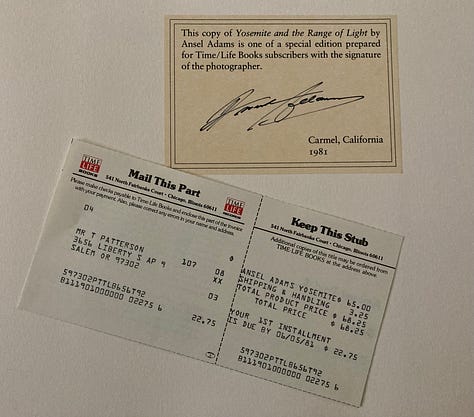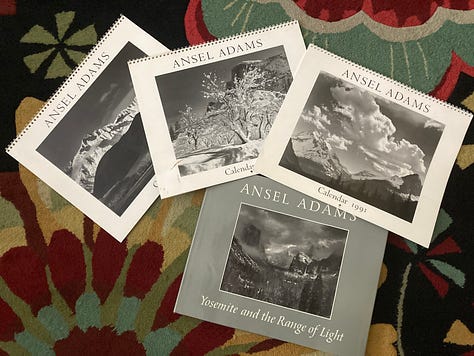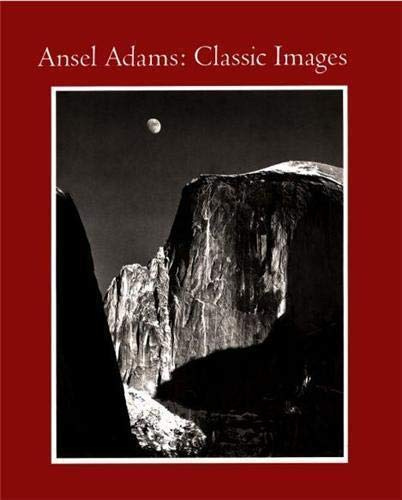Preserving the Wild: Ansel Adams and His Environmental Legacy
Finding landscape photography inspiration at a young age
Early Inspirations and Photography Education
As a young photographer growing up in a home without a TV, I listened to records and spent much time flipping through magazines, books, and comic books, by the wagonload, trying to suss out the ways pictures came to life. I’d spend hours looking through the latest LIFE or LOOK magazine issues. National Geographic was a go-to favorite, and it included stunning photography of exotic locales around the globe. I thought it would be as cool as possible to take those kinds of pictures, travel the world, see those places, and capture them on film.
Photography Icons: Names That Resonated
When I was around twelve, my parents subscribed to the TIME/LIFE photography library, which was, in large part, my early photography education. One book would arrive every month or two. If you’re unfamiliar with the series of 17 hardcover coffee table books, they were fantastic. Each book focuses on a particular aspect of photography: studio, camera, color, documentary, light and film, the print, photographing children, the great themes, art, photojournalism, travel, nature, and so on. A virtual smorgasbord of photography that I soaked up like a young sponge. It didn’t hurt, I suppose, that for a young man, these books were not shy about presenting nudity in the pages as art. It certainly gave me a lot to think about.
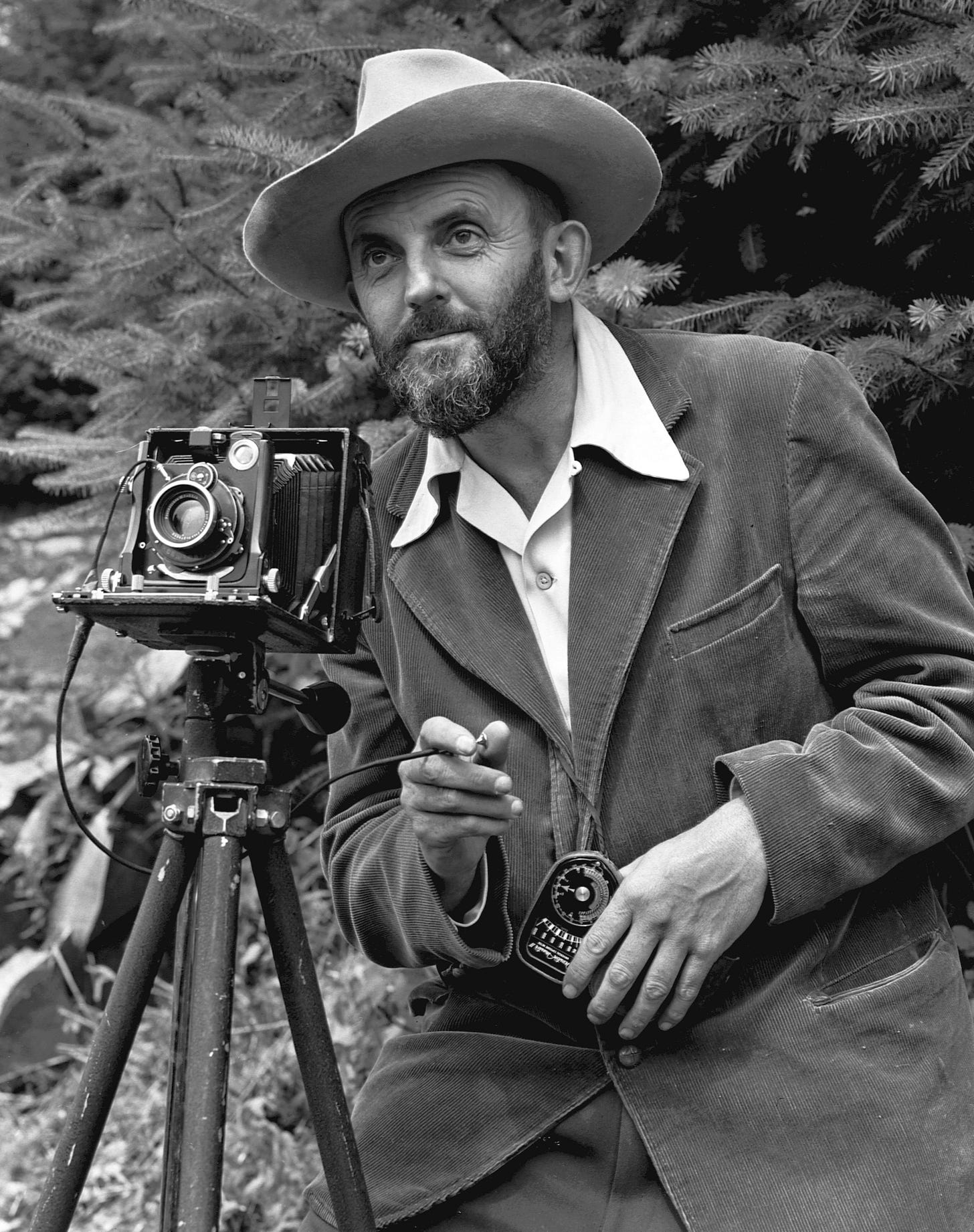
I loved the books, and looking back, it was amazing that my parents would buy this particular series of books. Yes, my dad was a hobbyist photographer, and I suppose that’s one big reason why, but they must have considered that some of their four sons would thumb through the hundreds of pages of photographs and pick something up. It didn’t seem so at the time, but looking at it now, there was a definite intentionality about it.
Famous photographers' names started repeating in the books and magazines: Edward Weston, Dorothea Lange, Walter Evans, Henri Cartier-Bresson, Robert Frank, Philippe Halsman, Irving Penn, Minor White, and Ansel Adams, among others. But it was the stunning landscapes of Ansel Adams that captivated my young photography mind more than the others.
Ansel Adams: A Musical Beginning
Adams’ magnificent landscape photography focused mainly on the West, particularly California. His approach was to recreate the landscape on paper as accurately as possible and avoid any trickery. Most of his photos were black and white, although later in his life, he did master color photography. Reading about his life, I get the sense that black-and-white photography meant more to him.
At the age of 12, out of curiosity, Ansel started to play an upright piano that had stood unused for years in the parlor of the Adams home near the beach on the western edge of San Francisco.
“With the kind of success that defines a prodigy, he taught himself the instrument. Carlie (Ansel’s father) saw this newly discovered aptitude as a blessing and set out to find a piano teacher. During the next three years, Marie Butler taught Ansel; then he moved on to piano studies with Frederick Zech and, finally, with Benjamin Moore in 1925. There was certainly no doubt in his parents' minds that as a concert pianist, Ansel would make them proud.”
So, yeah, Ansel could have been a concert pianist. When I learned that, I thought, seriously? But he instead became a world-famous photographer. What a choice. His skill on the piano, though, would be important later in his life.
A Turning Point: Photography Takes Center Stage
According to the introduction to the book “Ansel Adams, Classic Images,” in 1985, two things changed Ansel. The first was when he received a Brownie Box camera at thirteen, and the second was when the family took a trip to Yosemite that summer. His formal education ended when Ansel was 15, but his self-education in music and photography continued.
Sierra Club and the Formative Years
When he turned 17, he started working summers at the Sierra Club’s headquarters in Yosemite as custodian. It wasn’t long afterward he started roaming the Sierra Nevadas, often traveling with an ornithologist named Frank Holman, who knew the mountains as well as anyone and passed on his respect for both land and animals. He started photographing the Sierra and began publishing articles and photographs in the Sierra Club Bulletin. The next decade or two saw Adams learning the craft, experimenting with picture-taking, processing, and printing techniques. He was very social and spent a lot of time making friends, discussing the middle-class American values of thrift, scientific curiosity, initiative, and industriousness. He absorbed the ideas of Walt Whitman, Elbert Hubbard, and Edward Carpenter.
![Ansel Adams, Public domain, via Wikimedia Commons: Full side view of entrance with gate to the right, "Church, Taos Pueblo National Historic Landmark, New Mexico, 1941." [Misicn de San Gercnimo]; From the series Ansel Adams Photographs of National Parks and Monuments, compiled 1941 - 1942, documenting the period ca. 1933 - 1942. Ansel Adams, Public domain, via Wikimedia Commons: Full side view of entrance with gate to the right, "Church, Taos Pueblo National Historic Landmark, New Mexico, 1941." [Misicn de San Gercnimo]; From the series Ansel Adams Photographs of National Parks and Monuments, compiled 1941 - 1942, documenting the period ca. 1933 - 1942.](https://substackcdn.com/image/fetch/$s_!L2zZ!,w_1456,c_limit,f_auto,q_auto:good,fl_progressive:steep/https%3A%2F%2Fsubstack-post-media.s3.amazonaws.com%2Fpublic%2Fimages%2Fc30a6c08-43d6-4fe6-bd45-49f530b5be27_3000x2355.jpeg)
Personal Struggles and Career Choices
At around 21, Adams met Virginia Best, a student of vocal music, at Best’s Studio, a Yosemite Valley concession selling paintings, photographs, books, and souvenirs. They fell in love almost immediately and even got engaged, but Ansel broke it off because he didn’t know which career to pursue, music or photography, as he wasn’t making much money. But at the age of 28, with their relationship in an uncertain phase and with Ansel still not entirely self-sufficient, he went back to Yosemite to see her and, within a few hours of arrival, decided to offer himself to her again, even though he still was unsure about which career to pursue. She said yes, and they were married three days later!
Love, Marriage, and Expanding Social Circles
It’s said Adams was a compulsive worker who often worked sixteen-hour days, but he loved parties and was often the life of them. He loved good jokes and was apparently a fun guy to hang out with. While he pursued his photography career, his musical abilities opened doors to social circles that he might not have otherwise been able to enter, and his social world expanded. For example, Mabel Dodge Luhan, an arts hostess in Taos, New Mexico, extended an open invitation to her estate, and figures such as Georgia O’Keefe, Robinson Jeffers, or John Martin would take part. After dinner, Adams would be asked to play and would routinely wow the audience. It was a Luhan’s estate that Adams met photographer Paul Strand, and one night Strand shared a group of his recent negatives. The meeting proved to be profound for Adams. They talked at length about photography and Strand’s commitment to photography as a fine art, which changed Adams's approach to taking photographs.
Career Blossoms: Ansel Adams' Rise to Fame
Adams’ career eventually blossomed, and he became one of the best-known landscape photographers in the country. One thing to remember about Ansel Adams is that he was a fanatic for high-quality prints in his own prints and in printed reproductions in books, calendars, and fine arts prints.
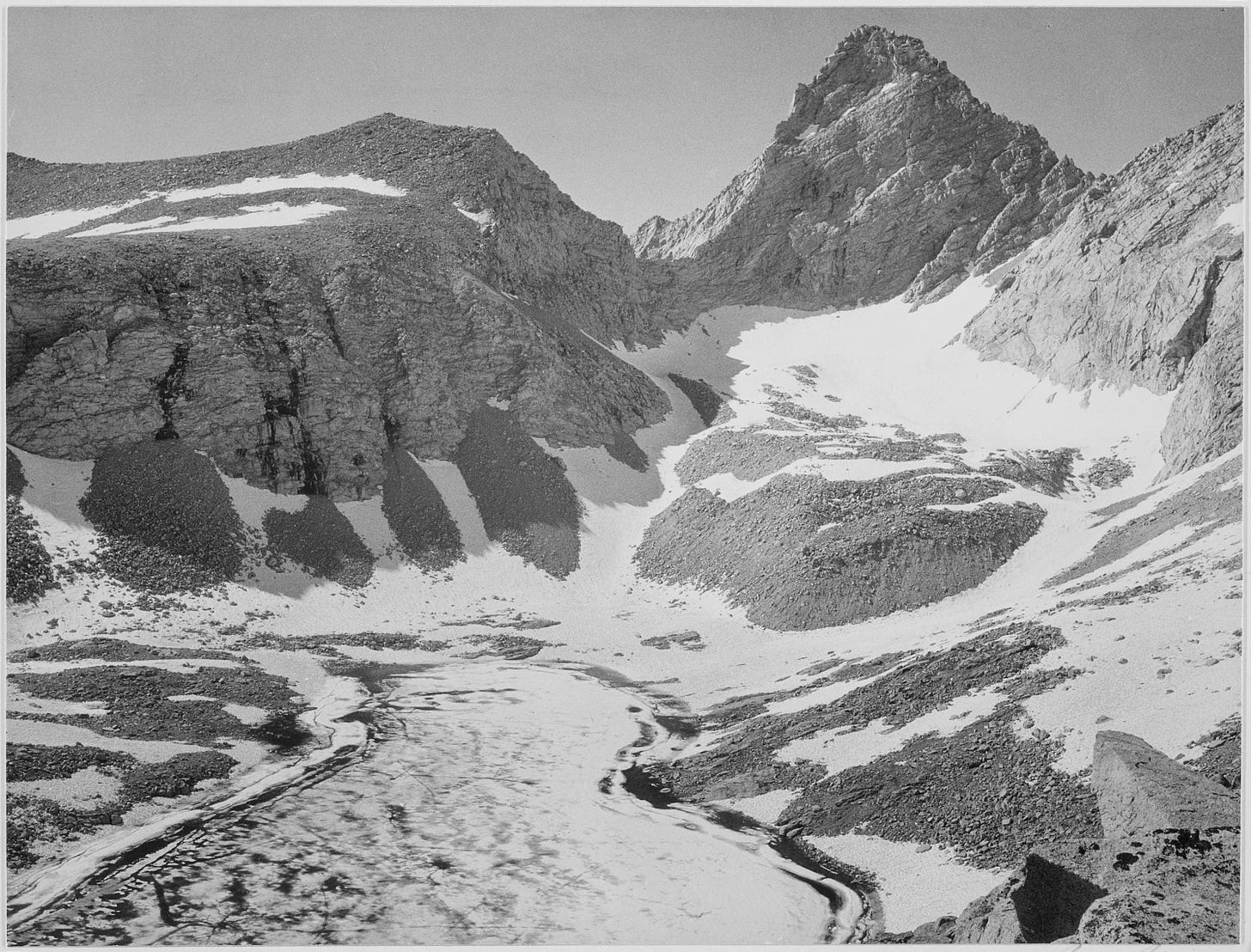
By 1935, fully devoted to photography, Adams was famous in the photography community, in large part due to a series of articles he’d written for Camera Craft that were devoted to the technical aspects of photography and printing. That year, Studio Publications of London commissioned Adams to create Making a Photograph (1935), a guide to photographic technique. The book was a huge success, largely owing to the high quality of the prints in the book. In 1940, due in large part to his increasing recognition, he helped found the first curatorial department devoted to photography as an art form at the Museum of Modern Art in NYC. It’s been said that most of Ansel Adams’ great work as a photographer took place by 1950, in the first half of his life. He spent much of the second half of his life working on raising awareness of environmental issues, and was director of the Sierra Club from 1934 – 1971. He also spent his time reinterpreting his earlier work and editing books, many of which became big sellers and helped raise awareness for preserving the natural landscape and the life it supported.
In 1980, President Jimmy Carter presented him with the Presidential Medal of Freedom. Part of the citation, which was given on June 9, 1980 (my 25th birthday!), read, "At one with the power of the American landscape, and renowned for the patient skill and timeless beauty of his work, photographer Ansel Adams has been visionary in his efforts to preserve this country's wild and scenic areas, both in film and on Earth. Drawn to the beauty of nature's monuments, he is regarded by environmentalists as a monument himself and by photographers as a national institution."
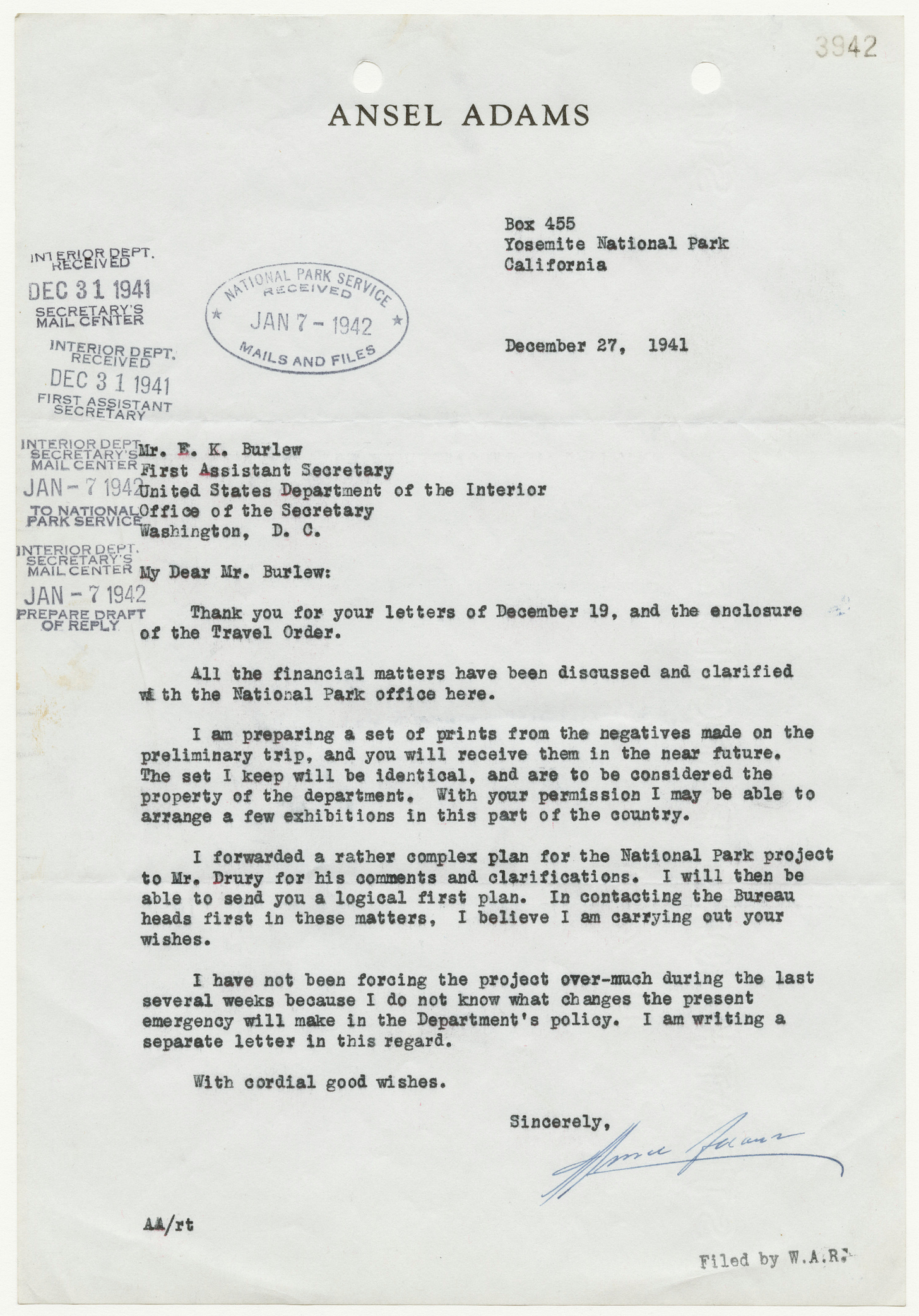
Legacy and Achievements
Add up his legacy, and it’s stunning: more than forty thousand negatives made, some ten thousand fine prints signed, more than five hundred exhibitions of his images presented, and more than a million copies of his books purchased. In a way, it’s unprecedented.
“Ask 100 people to name a photographer and 99 will name Ansel Adams; ask them to name a second photographer and you’ll get 99 different names. In fact, directly or indirectly, Ansel Adams has influenced every living landscape photographer. For me that influence manifests most in the freedom to render the natural world as my camera sees it, unbinding me from the impossible task of duplicating human vision. So pervasive is Ansel Adams’ pioneering approach to capturing nature, many contemporary photographers fail to appreciate his influence; some actually discount it. But criticizing Adams’ images by comparing them to what’s captured today is like criticizing Lewis and Clark for taking more than two years to do what can now be done in a few days.” - Gary Hart"
Personal Reflection and Ansel Adams Collection
As a young man, I spent much time outdoors snapping landscapes, and I’m sure some of that inspiration came from seeing so much of Adams’ works. Taking pictures of mountains, lakes, and trees, for a somewhat introverted young man, was easier than taking pictures of people! While I never matched Ansel Adams, I have taken a few pretty nice images along the way, and his work was always somewhere in the back of my mind as something to aspire to.
I’ve collected a few Ansel Adams items over the years. The biggest one is a huge coffee table book called “Yosemite and the Range of Light.” As picture books go, it’s stunning. I was barely 25 when I bought it for under $100, which would be about $375 in today’s money. What prompted me to spend that much money on a freakin’ book escapes me, especially as a low-budget radio DJ, but it was advertised as signed by Ansel Adams, so I bet that’s what put me over the edge. And yes, it’s cool. I found a similar copy on eBay just now for $200. I keep it in the original cardboard shipping box it arrived in and take it out every few years just to thumb through it.
I also own several large format Ansel Adams calendars from the mid-90s, and while I only have four of them, I will typically hang them on the wall for the current year when the days and dates match up.

